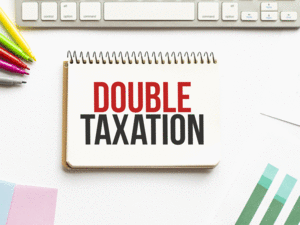Amendments made to the way contributions to the EPF, NPS and Superannuation fund have increased the tax burden on certain sections of the salaried class.

Exit from NPS is tax-free if 40% of the accumulated fund is invested in receiving an annuity in the future and 60% is withdrawn as lump sum. However, the annuity would be taxable when received. For Approved Superannuation Fund (ASF), employer contributions up to Rs 1.5 lakh were non-taxable till financial year (FY) 2019-20. An annual increase in ASF corpus and exit continues to be non-taxable subject to certain conditions.
With rising salary levels combined with income-tax benefits and good returns, many employees enrolled into NPS and/or ASF in addition to EPF to increase their retirement kitty.
However, amendments were made to the way contributions to the EPF, NPS and ASF are taxed and increase the tax burden on certain sections of the salaried class. These changes could actually disincentivise investments into these much-favoured investment vehicles.
The Finance Act 2020 replaced the earlier clause of ASF exempting employer’s contribution up to Rs 1.5 lakh in a financial year with the introduction of a new provision. As per the new law, employer’s contributions exceeding Rs 7.5 lakh in the aggregate annually towards PF, NPS and ASF are now taxable starting from FY 2020-21.
‘Annual accretion’ by way of interest, dividend, or similar amount on the excess contribution is also taxable. The excess contributions including accretions for a given year are taxable in later years too. The government’s rationale for this change was that the income-tax concessions were unduly benefitting the high-salaried employees and hence the need for an upper cap to the non-taxable employer contributions. The Central Board of Direct Taxes (CBDT) recently introduced Rule 3B on March 5, 2021, for computing such excess and accretions thereto.
In the context of PF, ‘annual accretion’ is the increase in the fund balance due to employer contributions and interest which is credited annually. However, as regards NPS and ASF which are Net Asset Value (NAV) based, there is typically no interest or dividend. Hence, whether an increase in NAV is to be treated as ‘annual accretion’ is not clear.
Further, if the employer’s contribution to PF is, say Rs 5 lakh and NPS is Rs 4 lakh, whether the excess over Rs 7.5 lakh, i.e., Rs 1.5 lakh is out of EPF or NPS is not clarified. Further, taxable contributions/accretions of any year shall remain a part of the fund balance and remain taxable in later years till fully withdrawn which is detrimental to the individual.
The second blow was struck through the Finance Act, 2021 whereby interest accruals on the excess of employee’s own annual contributions over Rs 2.5 lakh to EPF and Voluntary PF made post-April 1, 2021 are now taxable, though arguably only at the stage of withdrawal. The CBDT shall prescribe the methodology for the determination of taxable interest.
The increase in taxable income in the initial year due to these changes is illustrated below:
In totality, these new amendments will increase the income-tax burden of not only the affected high salaried individuals but possibly other employees with higher own contributions to EPF, i.e., through ‘voluntary PF’.
Another issue here is that of potential double taxation. In the absence of clarifications, a person who suffers tax now due to excess employer contributions to EPF and interest thereon and exits the EPF scheme before 5 years may suffer tax again on such excess amounts at the withdrawal stage.
From a compliance perspective, the affected employees will need to undertake elaborate calculations and track the excess contributions and accretions every year. Employers will need to maintain records and withhold appropriate income-tax when their contributions exceed Rs 7.5 lakh. The EPFO/private PF trusts too will need to track excess employee contributions over Rs 2.5 lakh and withhold appropriate income-tax at the withdrawal stage.
In fact, the amendments may disincentivise investments into EPF/NPS/ASF and some impacted employees may even consider opting out or reducing their contributions to mitigate the higher tax burden.
To conclude, one hopes that the government urgently resolves the issues and provides clarity or better still, completely do away with these new provisions which could be a welcome relief for the salaried class given the ongoing financial distress caused by the COVID-19 pandemic.